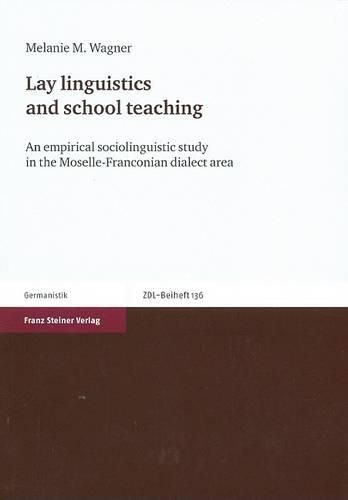Readings Newsletter
Become a Readings Member to make your shopping experience even easier.
Sign in or sign up for free!
You’re not far away from qualifying for FREE standard shipping within Australia
You’ve qualified for FREE standard shipping within Australia
The cart is loading…






Speakers of German, like the speakers of most other standardised varieties, are familiar with the concept of bad or incorrect language. This study investigates the status of different language varieties in schools in the Moselle-Franconian dialect area around Trier: Keeping in mind Ammon’s definition of Sprachnormautoritaten (‘authorities on the norm’) as people whose job requires them to correct the linguistic behaviour of others (e.g., teachers) and his assumption that their influence on linguistic norms is probably greater than that of the codifiers since they mediate the codex to others, this study aims to answer the following questions: How do lay people, especially so-called ‘authorities on the norm’, perceive linguistic norms? How do their knowledge and value judgements differ from those of the codifiers and/or academic linguists? Data collected from teachers and pupils are analysed to provide information about non-linguists’ perceptions of standard norms and stigmatised forms and the degree of agreement with the codified norms. This book thus throws light on language attitudes within a linguistic domain usually assumed to play an important role in the transmission of standard norms, viz. the school.
$9.00 standard shipping within Australia
FREE standard shipping within Australia for orders over $100.00
Express & International shipping calculated at checkout
Speakers of German, like the speakers of most other standardised varieties, are familiar with the concept of bad or incorrect language. This study investigates the status of different language varieties in schools in the Moselle-Franconian dialect area around Trier: Keeping in mind Ammon’s definition of Sprachnormautoritaten (‘authorities on the norm’) as people whose job requires them to correct the linguistic behaviour of others (e.g., teachers) and his assumption that their influence on linguistic norms is probably greater than that of the codifiers since they mediate the codex to others, this study aims to answer the following questions: How do lay people, especially so-called ‘authorities on the norm’, perceive linguistic norms? How do their knowledge and value judgements differ from those of the codifiers and/or academic linguists? Data collected from teachers and pupils are analysed to provide information about non-linguists’ perceptions of standard norms and stigmatised forms and the degree of agreement with the codified norms. This book thus throws light on language attitudes within a linguistic domain usually assumed to play an important role in the transmission of standard norms, viz. the school.